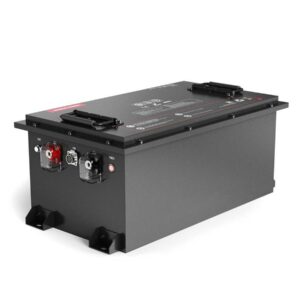What is the life expectancy of the interstate battery?
Interstate batteries typically last 3–5 years under normal use, influenced by factors like depth of discharge cycles, temperature extremes, and maintenance practices. Deep-cycle variants (e.g., golf cart batteries) may last 4–6 years with 50% DoD cycles. Always follow OEM charging guidelines to prevent sulfation, a major lifespan reducer.
Best Interstate 6V Golf Cart Batteries
What factors determine Interstate battery lifespan?
Key factors include cycle depth, ambient temperature, and charging habits. Frequent 80%+ discharges halve lifespan compared to 50% cycles.

Interstate batteries use lead-acid or AGM technologies, where deeper discharges accelerate plate sulfation. Pro Tip: Store batteries at 50% charge in 15–25°C environments to minimize aging. For example, an Interstate GC2 golf cart battery lasts ~1,200 cycles at 50% DoD but only 500 cycles at 80% DoD. High temperatures (>30°C) also degrade lifespan by 30–50% annually. But what if you frequently use partial charges? Partial charging reduces stratification risks in flooded lead-acid types.
How do Interstate batteries compare to lithium alternatives?
Lithium batteries (e.g., LiFePO4) offer 2–4x longer cycle life but cost 3x more upfront than Interstate lead-acid.
Interstate’s FLA (flooded lead-acid) batteries provide 200–300 cycles at 80% DoD, while LiFePO4 delivers 3,000–5,000 cycles. Practically speaking, lithium’s 95% efficiency vs. lead-acid’s 70–85% reduces charging time. For example, a 48V 100Ah Interstate bank might require 8 hours to charge, whereas lithium equivalents finish in 5 hours. However, lithium thrives in extreme temperatures (-20°C to 60°C) where lead-acid fails. But is lithium always better? Not for infrequent use—lead-acid’s lower self-discharge (3–5% monthly) suits seasonal applications.
| Metric | Interstate FLA | Lithium LiFePO4 |
|---|---|---|
| Cycle Life (80% DoD) | 300 cycles | 3,500 cycles |
| Weight (100Ah) | 62 lbs | 26 lbs |
Best 8V Batteries for Golf Carts
Battery Expert Insight
FAQs
Can Interstate batteries be reconditioned?
Partially—desulfation chargers may recover 10–20% capacity in early-stage degraded units, but severely sulfated batteries require replacement.
Do Interstate lithium batteries exist?
No, Interstate specializes in lead-acid/AGM. For lithium options, third-party LiFePO4 packs compatible with Interstate systems are available.
